Working Backwards to Find an Activation Metric
Unlike most pieces of SEO that appear when you google for “activation metric”, this article doesn’t pretend that each product has an obvious activation event.
This practical guide is a product of our long and chaotic quest for an objectively good activation milestone.
Hard time onboarding new users 🦐
People usually appreciate Fibery if they get it. Our #dopamine Slack channel is rarely empty and our churn rate is quite low.
If is the problem here. Only ~1.5% of leads signing up for the product are still active after a month. In fact, most leave after a single short session.

We had always struggled with explaining Fibery to unprepared brains. This time we decided that poor activation is the problem. So we assembled a dedicated cross-functional team headed by the CEO — serious shit, you can tell.
The team quickly came up with all sorts of ideas: from concise tutorials to entire product area redesigns. But how do we make sure that these changes actually improve things? What metric should we optimize for in our experiments?
Activation event for a non-linear product 😬
This is where “activation metric” or “activation event” kicks in. The goal is to find an event (or sequence of events) that
- happens quite early in the customer’s journey
- predicts the future purchase well
For Dropbox it’s “file uploaded”, for Twitter — “10 users followed”, for Airbnb — “booking made”. Once the event is identified, the objective is to increase the % of leads that reach it (without affecting its predictive power).
So what’s the activation event for Fibery?
Fibery is a no-code workspace for teams. Our power users combine building blocks — Databases, Views, and Rules — to create collaboration tools for their teams. The end result is a connected workspace that replaces a few poorly integrated tools like Google Docs + Trello or Productboard + Confluence.
Fibery is a highly non-linear product. People approach our digital Lego kit very differently. Some build the whole data structure before importing and visualizing real data — others focus on a single database first. Some invite a “co-architect” straight away — others don’t tell anyone about Fibery until the workspace is absolutely ready. Both “database created” and “user invited” events turned out to be poor early predictors of a future purchase on their own.
We spent an embarrassing amount of time looking for the 🦄 activation milestone but nothing clicked.
Working backwards from the purchase ⏪
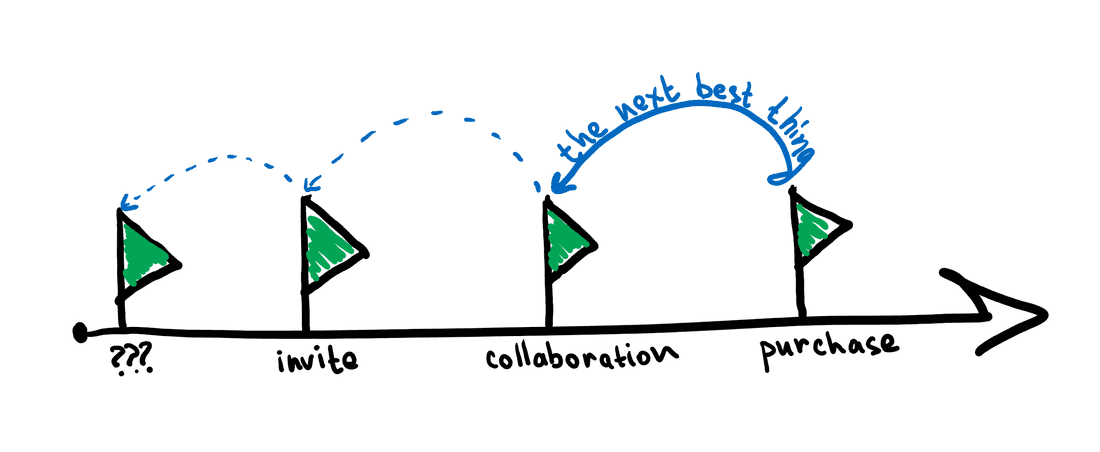
In the end, the metric that matters to a sustainable product company is revenue. We create landings, release features, and post memes on Twitter — all to increase $MRR.
In an ideal world, the only activation metric we would need is “subscription purchased”. But our world is meh:
- it takes our customers an eternity (up to 100 days) to make a buying decision,
- an abysmal percentage of leads turns into customers.
We would have to wait for at least 4 ridiculous months to see how our experiments affect this “activation” metric. What a feedback loop!
Okay, purchases come rare and late. So what’s the next best thing? We are looking for a desired event that
- happens meaningfully earlier,
- is reached by a considerably higher number of leads,
- predicts the target event well.
Let’s focus on the first two items first to find a few good candidates. Here is a chart to guide us:
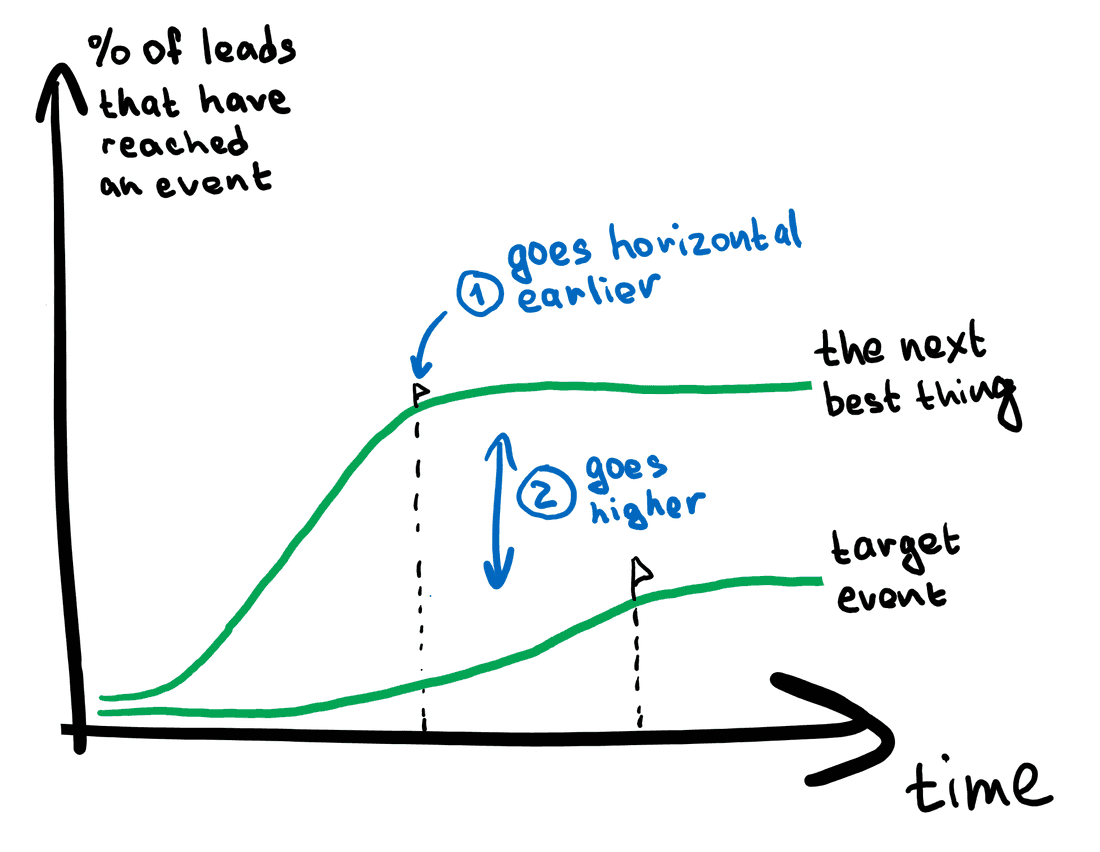
Our real chart looks like this:
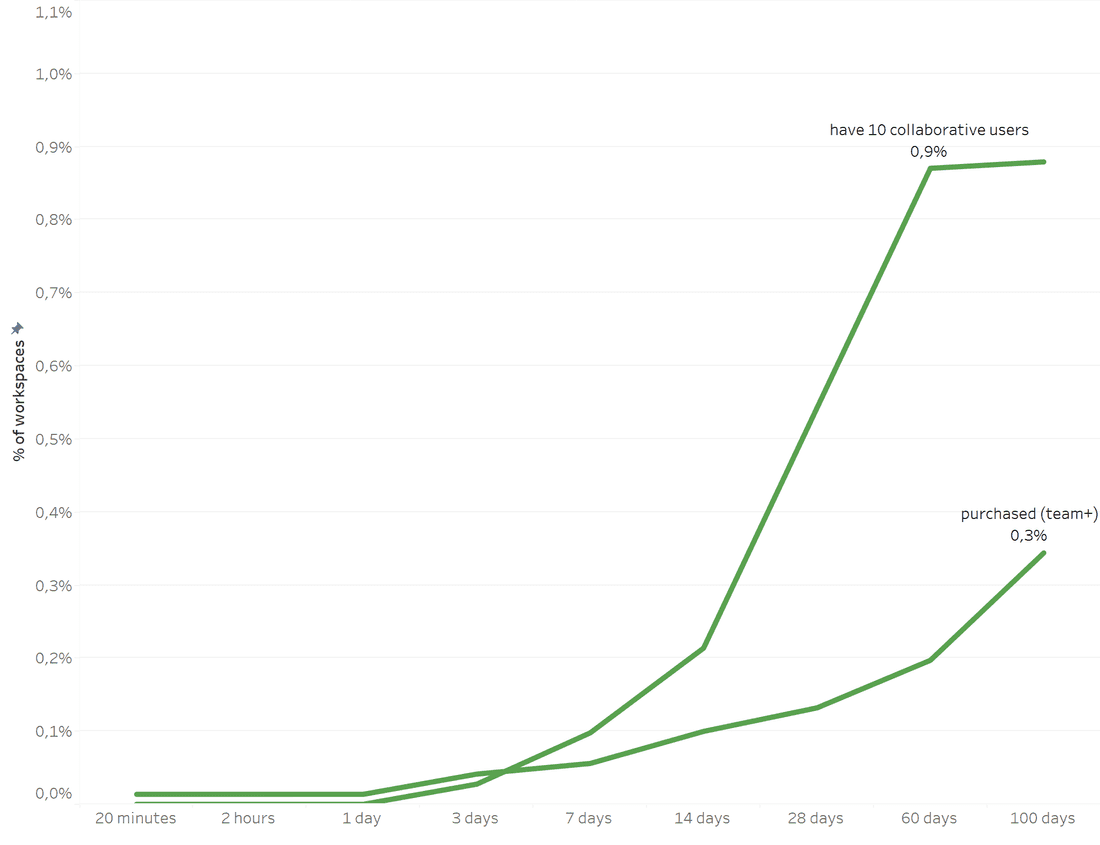
Once we have a nice candidate, let’s figure out if it has any predictive power. Do leads that reach “the next best thing” have a significantly higher chance to reach the target event? Or, in less abstract words: are leads that reach 10 collaborative users in the first 60 days more likely to buy a subscription in the first 100 days?
For us the numbers are 22% vs. 0.3% base rate. The predictive power is alright!
Analyzing the activation triangle ◀
Once we have “the next best thing”, we repeat the same steps to find “the next best thing to the next best thing”. We stop once we are satisfied with the length of the feedback cycle.
The chart above is still helpful for finding candidates, but calculating the predictive power ad-hoc is overwhelming. Instead, we create a triangular table that shows what % of leads reaching a certain milestone reach the next ones as well. Here is ours:
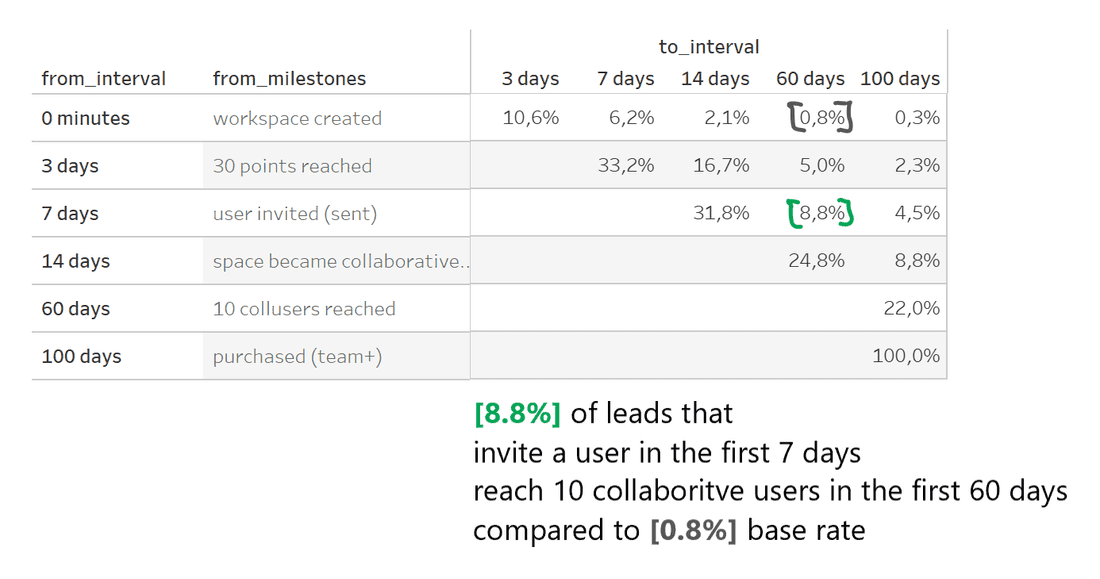
Now we can get recklessly creative and throw all kinds of activation metric chains into this table to see which one performs better. We ended up with a chain on the screenshot above (we’ll explain “points” later). Depending on your needs, you might benefit from more activation events at shorter intervals.
Okay, now with the activation metric(s) defined, how do we understand if we are actually improving the product? There are, basically, only two charts to look at:

There is a temptation to force users into an activation event: 👿 “invite at least 3 users to create an account”. The second graph is here to keep us sane.
Points for loops ➰
Experimenting with chains, we found out that all individual events (“view created”, “database created + entity created”, etc.) suck at being the first activation event — 🤷♂ non-linear product, you know…
Instead, we borrowed a couple of instruments from the game designer’s toolbox. At first, we identified the key learning loops in Fibery:
- “cross-Space relation created”
- “document created”
- “integration space installed”
- …
Then we introduced invisible gamification: user gets N points the first time they complete a learning loop, N/2 for the second time, N/3 for the third, and so on.
Here is a sample session with points assigned:

The points system turned out to be pretty effective at predicting future purchases quite early:
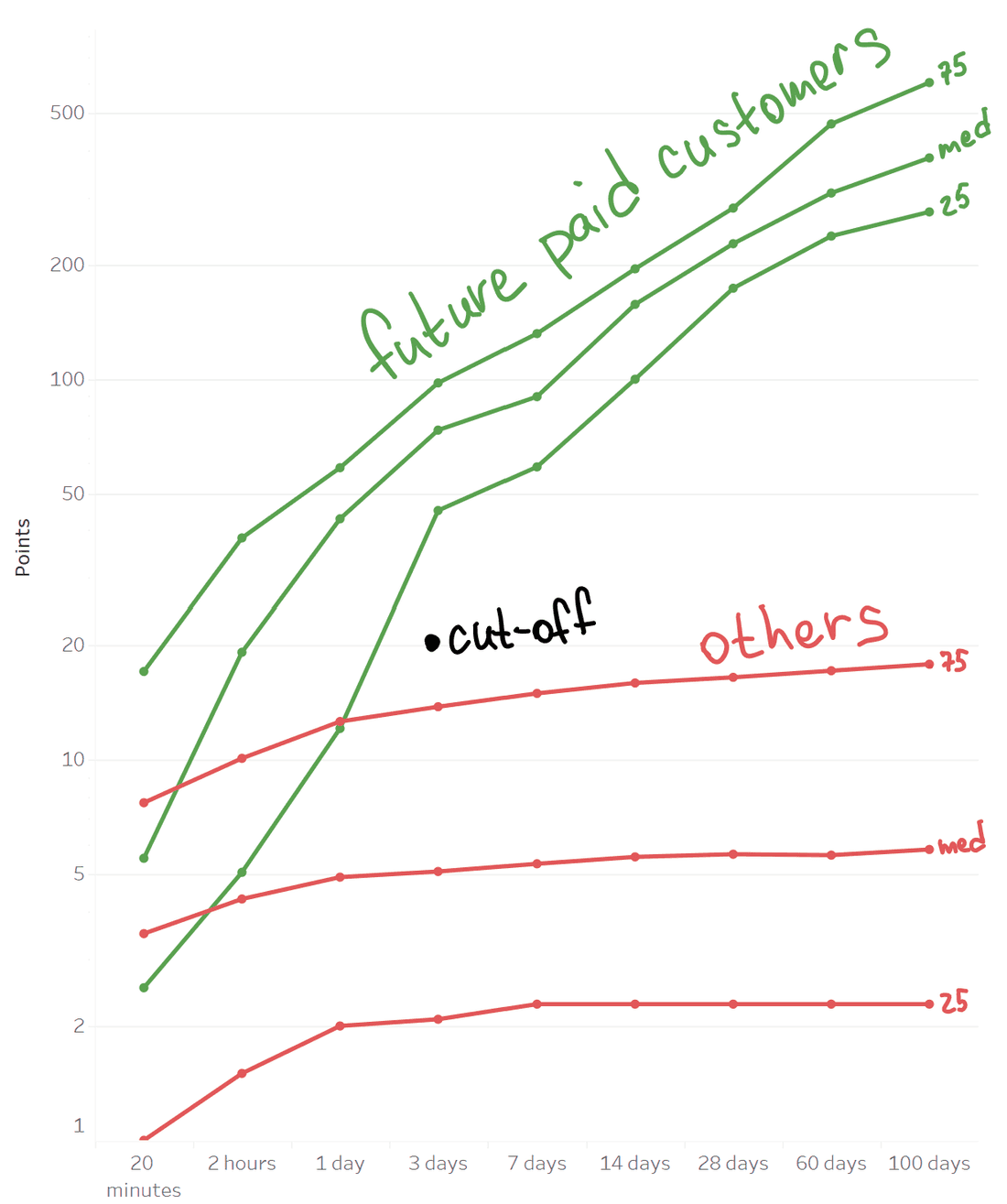
Finally, we have found our activation event: “reach 30 points in 3 days”! Previously vague objective “improve activation rate” now has clear key results:
- 20%+ of leads reach 30 points in 3 days (currently 12%),
- activated → paid conversion rate is above 12.5% (currently 12.5%).
Key outtakes 💼
- If you struggle to find a decent activation event, work your way backwards from the purchase.
- If your product is a sandbox with no clear “success path”, try secretly giving out learning points to build an activation event on top of them.
Now, check out Fibery for product teams and try reaching 30 points.
Ask for details and share how you picked an activation event for your own product in our community.
Psst... Wanna try Fibery? 👀
Infinitely flexible product discovery & development platform.